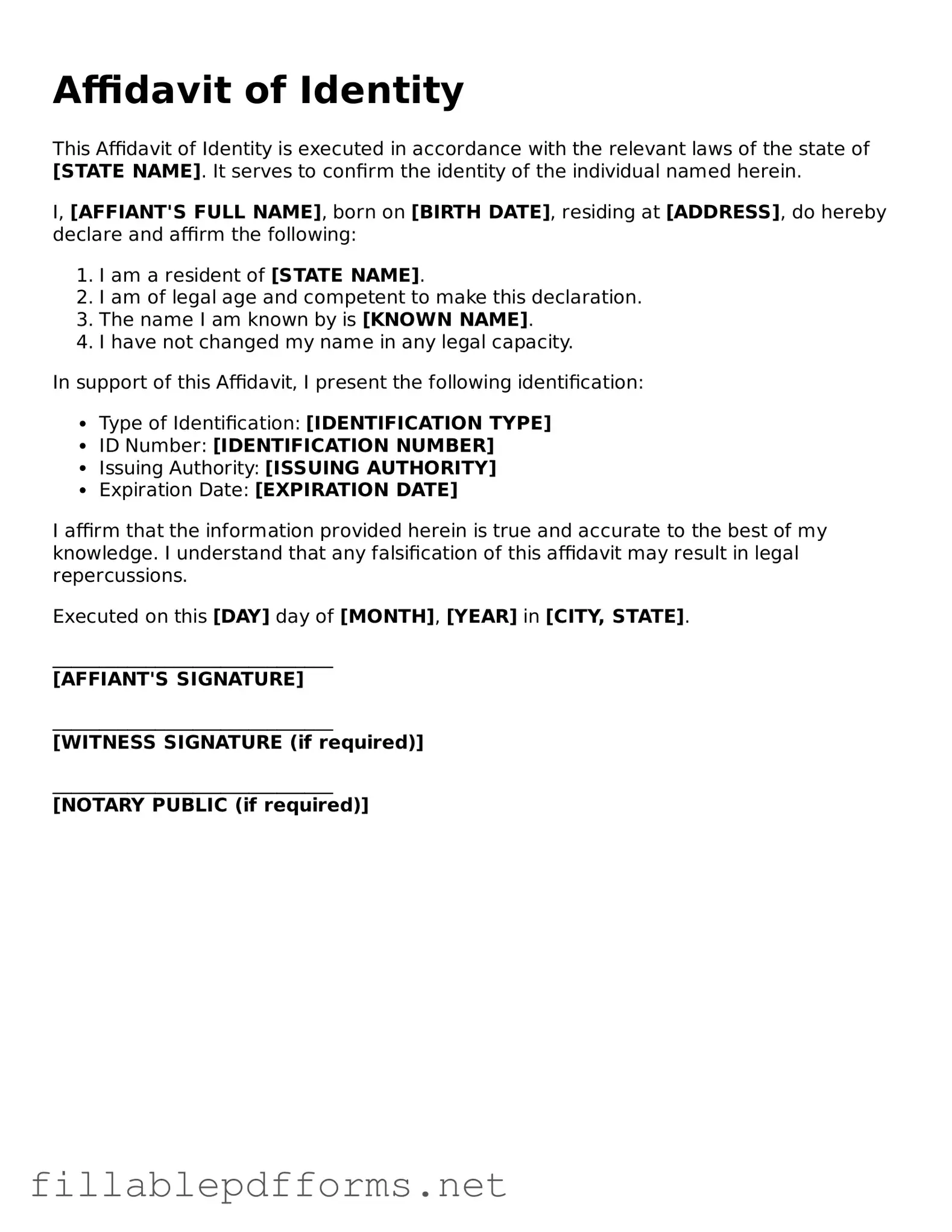Blank Affidavit of Identity Template
The Affidavit of Identity is a legal document used to verify a person's identity. This form is often required in situations where an individual needs to confirm their identity for legal purposes, such as applying for a loan or settling an estate. Understanding how to properly complete this form can help ensure that your identity is recognized and accepted in various legal matters.
Launch Editor Here
